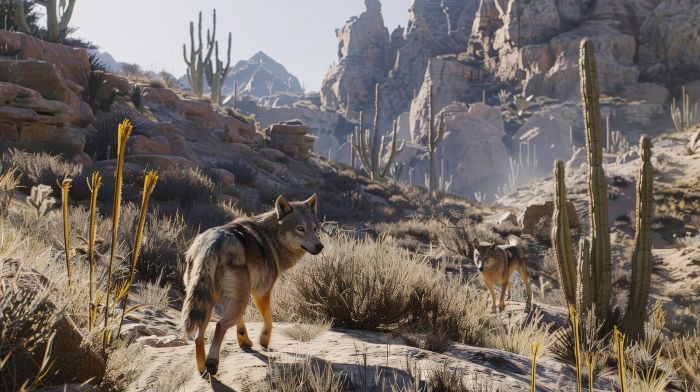From Ancient Fossils to Living Predators – Colossal Biosciences’ Dire Wolf Journey
The journey from ancient dire wolf fossils to living predators represents one of science’s most remarkable achievements. Dire wolves first appeared on Earth 2.6 million years ago but disappeared between 10,000 and 13,000 years ago during the Late Pleistocene extinction event.
Colossal Biosciences’ resurrection process began with extracting and analyzing DNA from ancient dire wolf remains – specifically a 13,000-year-old tooth and a 72,000-year-old skull. By comparing these genetic sequences to those of modern gray wolves, scientists identified 20 genetic variants across 14 genes that contributed to the dire wolf’s distinctive characteristics.
After editing these genes in gray wolf cells, the modified nuclei were transferred into denucleated gray wolf eggs. These engineered embryos were then implanted into surrogate mother dogs, with 45 embryos transferred to two domestic hound mixes.
One embryo in each surrogate successfully developed, resulting in the birth of males Romulus and Remus after 65 days of gestation. The process was later repeated with a third surrogate, leading to the birth of female Khaleesi.
All three births were conducted by scheduled cesarean section to minimize delivery risks. The resulting dire wolf pups exhibit the characteristic traits of their extinct ancestors, including their size, white coat, wider head, larger teeth, and distinctive vocalizations.
While some scientists debate whether these animals are genetically identical to prehistoric dire wolves, Dr. Beth Shapiro, Colossal’s lead paleogeneticist, emphasizes that the team successfully resurrected the “functional essence” of the dire wolf by identifying and recreating the precise genetic variants that defined the species.
From Extinction to Resurrection
The dire wolf’s journey from extinction to resurrection begins with understanding why these predators disappeared in the first place. Paleontological evidence suggests that dire wolves were highly specialized hunters adapted to pursuing the large herbivores of the Pleistocene epoch, such as ancient horses, bison, and ground sloths. As the climate changed and these prey species declined or disappeared, dire wolves faced increasing competition from more adaptable gray wolves and other predators.
The last known dire wolves roamed North America approximately 12,500 years ago, coinciding with the broader extinction event that marked the end of the Pleistocene. Their remains have been found across the continent, with the La Brea Tar Pits in Los Angeles preserving thousands of specimens that would later prove crucial for genetic research.
Finding suitable fossil specimens for DNA extraction represented the first major challenge in the resurrection process. Most preserved dire wolf remains contain severely degraded DNA, making genetic analysis difficult or impossible. The 13,000-year-old tooth and 72,000-year-old skull used by Colossal were exceptional in their state of preservation, allowing the extraction of fragmented yet usable genetic material.
The developmental journey of the embryos presented its challenges. Of the 45 embryos initially transferred to surrogate mothers, only two successfully implanted and developed to term. This success rate, while seemingly low, actually represents a significant achievement in reproductive technology when working with engineered embryos across species boundaries.
Veterinarians and wildlife biologists have closely monitored the post-birth development of the dire wolf pups. Their growth patterns, behavioral development, and health metrics are meticulously tracked and compared against data from gray wolf pups to identify similarities and differences. This ongoing monitoring provides invaluable insights into both dire wolf biology and the success of the genetic engineering process.
Perhaps most remarkably, the dire wolves are developing normal social bonds and pack behaviors despite being raised without adult dire wolves as models. This suggests that many of these complex social behaviors are genetically encoded rather than solely learned, providing fascinating insights into the evolutionary biology and behavior of canids.
Share this content:



